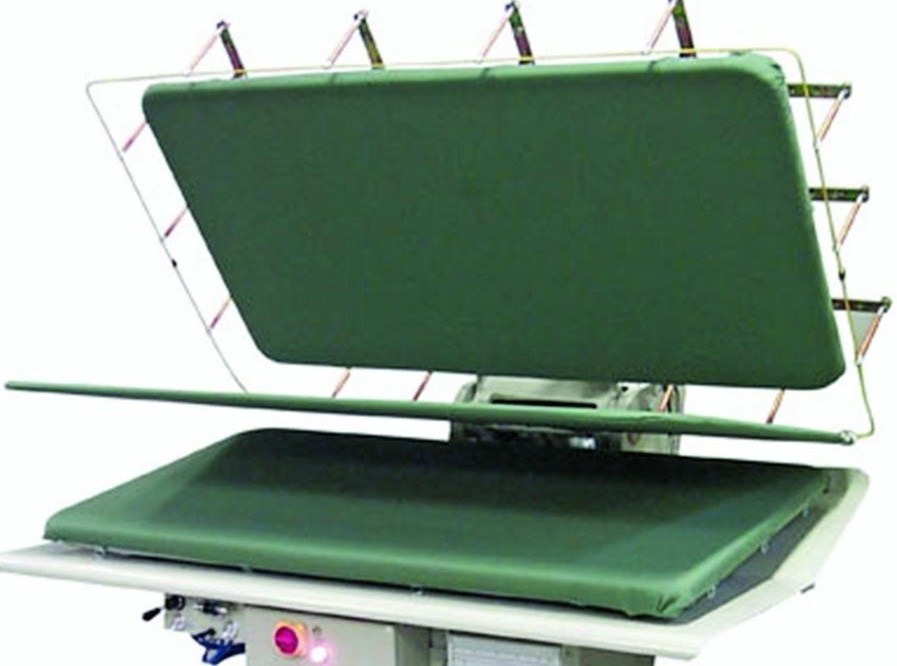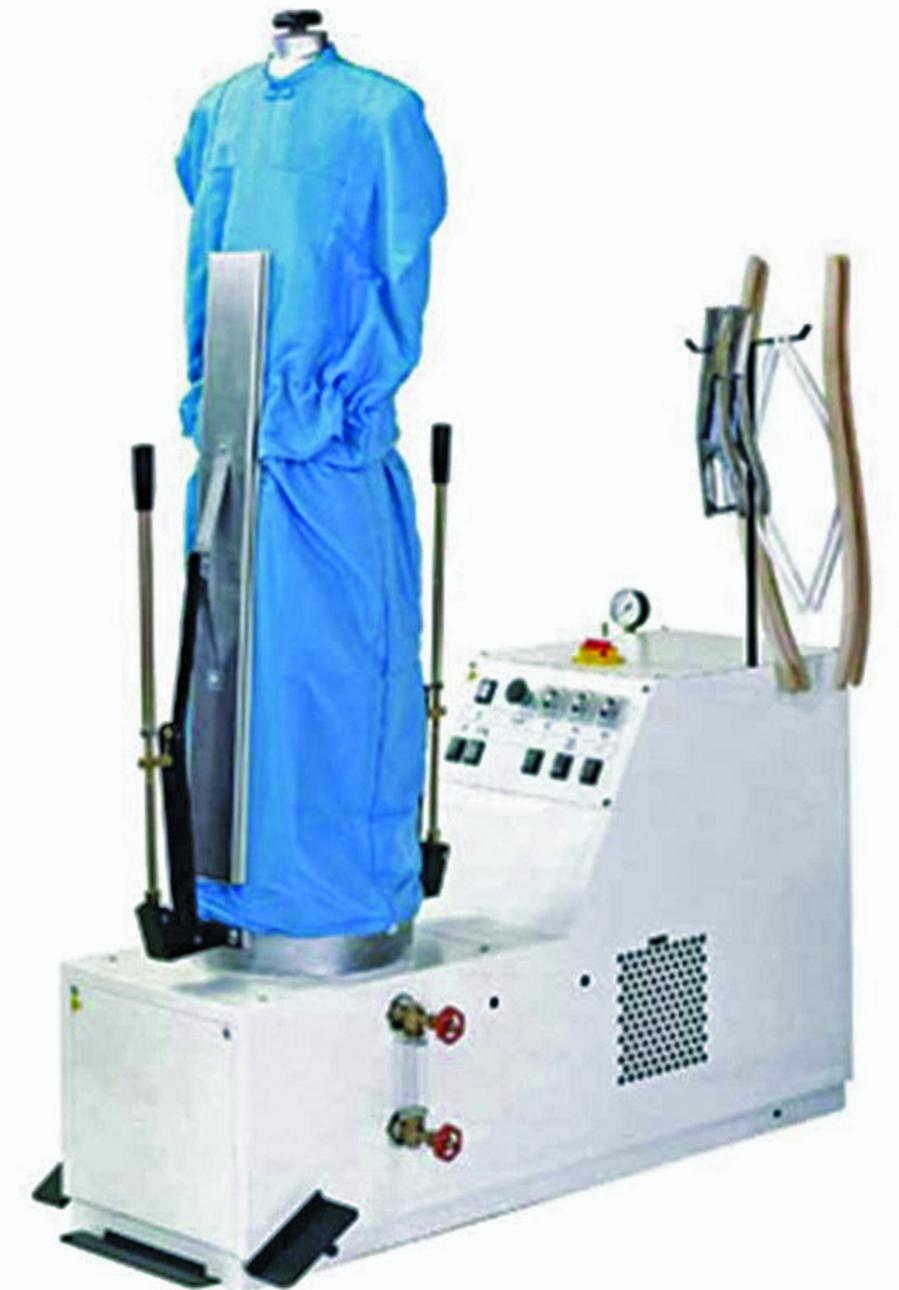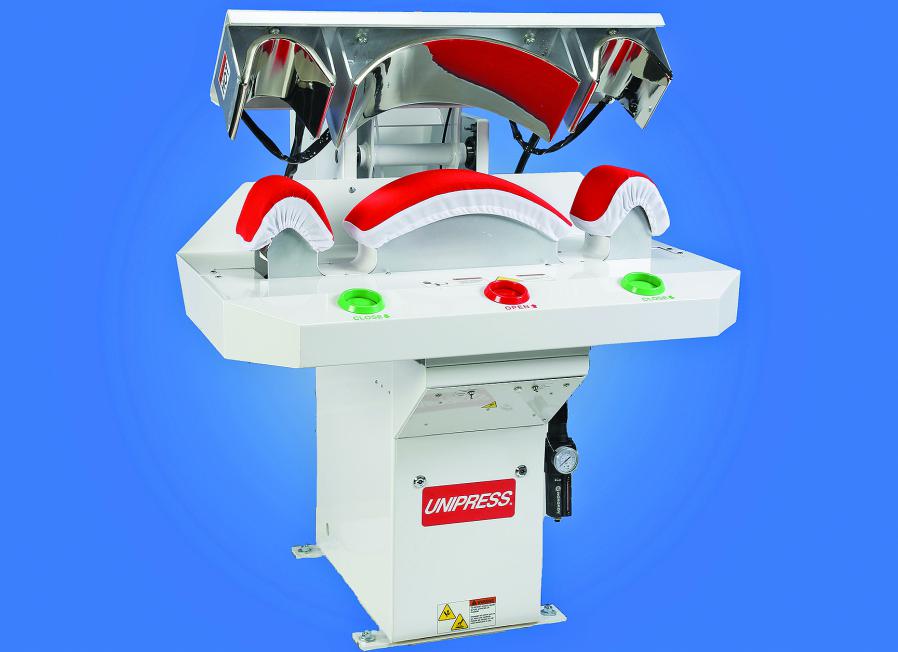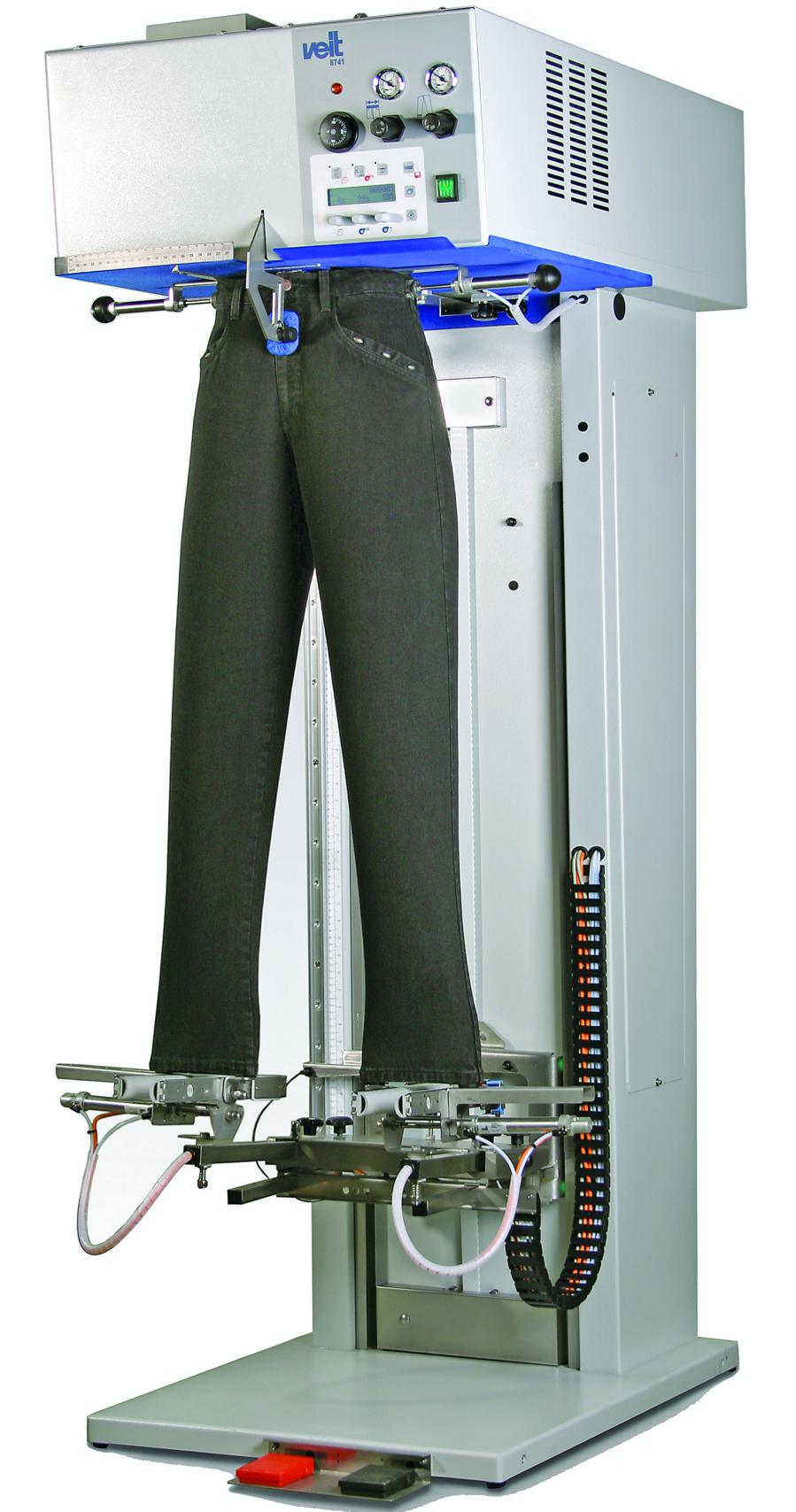
While pressing can remove the ‘unwanted’ crease as well as impart ‘wanted’ creases, finishing can only remove the ‘unwanted’ crease, thereby limiting its use for formal clothing. However, finishing being a continuous process with tremendous possibilities for automation, mass manufacturing is gradually adopting finishing over ironing and pressing to scale up the production. While the technology of buck ironing is giving way to sophisticated buck pressing and non-contact tunnel finishing is giving way to flexible finishing module, the trend is shifting from mass manufacturing to flexible manufacturing. Dr. Prabir Jana, Professor, NIFT Delhi traces the evolution of pressing and finishing technology and how the market-led developments are maturing to support the flexibility in future.
Pressing is done by compressing the fabric between either two flat or curved surfaces (no relative motion between the surfaces); and though pressing is also a batch process like ironing, pressing is mainly used either for large areas (as it is a faster process than ironing) or for 3D shaping of the garment part (e.g., by pressing a convex and a concave surface together). On the other hand, finishing is done to remove the ‘unwanted’ crease by applying stretch. The garment is worn over an inflatable dummy and steam is applied to inflate the dummy, thereby removing the creases; the hot air follows steam to remove the remaining moisture.

Pressing
Initially, the pressing tables were primarily two flat surfaces covering large area and most popular pressing function was trouser legger press. In a single press the whole trouser leg, from below crotch to bottom hem portion, was pressed at one go. There were improvised pressing machines for sweater and heavy knitwear as well, where garments were laid flat on an upsteam table and another flat surface (created by tensed fabric) used to press over the garment in a scissor action. Although pressing of flat surfaces were relatively easy and simple technology was used to make the process faster by covering greater area at one go, the real challenge of pressing came while pressing shaped area of garments.
In past, ironing tables used to have one movable arm and various convex shapes of bucks for ironing shaped garments; the shaped portion of garment parts were placed over the bucks and hand iron was used over the top to iron remove the creases from the shaped portion of the garment (like shoulder and sleeve crown area of jacket). Initially there were only few generic shapes of bucks available and same buck was used for right and left side of the garment. First of all the process was extremely slow and as the convex bucks was of approximate shape of garment area, quality of the process was compromised. Although the process used to be called ‘buck pressing’, it was actually ‘buck ironing’ as the top surface was the same hand iron moving over the buck surface. Generally the convex or male shapes are stationary heads; garments are laid over top of it and concave or female shapes are moving heads that come over it in vertical action to press the garment parts.

Realizing that actual 3D shaping of any symmetric garment part is mirror image of each other; the pressing machine suppliers started manufacturing mirror shaped bucks for alternately pressing left and right side of the garment. Formal jacket offers the maximum challenge as different parts have different 3D shaping. The press manufacturers very painstakingly created exact replica of different sections of jacket shapes to offer the best possible quality appearance while the process remains fast. Initially, all buck shapes were horizontal and operator had to place the garment horizontally over it and the motion of head was vertical downwards. Then came vertical buck pressing, which can be used for smaller units and helps loading the garment better and quicker due to gravity assist. These types of machines use a combination of oscillating front and back forms, where shirts can be simultaneously loaded and pressed. This method achieves optimal handling and machine time with remarkably good results. A plus for some of the vertical presses is that they have sensors to determine if the waist and inseam are of correct size. Additionally, if the measurements are close, but not quite within tolerance, the machines can be programmed to stretch the garment to the correct size. Obviously, there is a limit to which the garments can be stretched, but safe tolerances have been established.
Formal jacket offers the maximum challenge as different parts have different 3D shaping. The press manufacturers very painstakingly created exact replica of different sections of jacket shapes to offer the best possible quality appearance while the process remains fast.
During pressing, steam and heat are applied from both, top and bottom surfaces. Bottom steam is only used prior to pressing to help condition the garment, whereas top steam is used in the pressing operation to penetrate the garment and also act as a pressing force, reducing the need for pressure pressing. Vacuum at the buck draws steam through the garment to avoid condensate while the head acts as an iron and helps set the crease. Normally, heads either use Teflon-coated or fabric-covered aluminium or steel to help spread the top steam evenly over the entire garment. Buck pads and covers are porous so that the vacuum can dry and set the garment. The main purpose of the cover system is to help build good vacuum force during pressing, for good transfer of heat. Very high quality cover systems are generally made with the use of Kevlar/Nomexfibres to achieve good heat and pressure resistance, so that the cover itself is not deformed when heat and pressure are being applied. Generally vacuum is applied from the buck. In certain instances in jacket pressing, the head vacuum is also used to separate the plies to eliminate marks. Most automated pressing machines these days are fitted with an integrated suction on the steam head for some of the operations, because the head and buck are partially enclosed at the rear of the machine and if one does not extract the excess steam, then one may have moisture droplets or overspray of steam may hit the garment.
Most automated pressing machines these days are fitted with an integrated suction on the steam head for some of the operations, because the head and buck are partially enclosed at the rear of the machine and if one does not extract the excess steam, then one may have moisture droplets or overspray of steam may hit the garment.
Finishing
A standard form finisher for tops and bottoms is an automated way to apply steam and air to certain garments and is normally used in conjunction with hand pressing. A garment is placed on a dummy where it is steamed and blown out, thus eliminating 25-30% of the hand pressing. There are two different kinds of form finishers available, viz. the 2D and the 3D form finishers. 2D form finisher machines are used for shirts, sports jackets, casual jackets and dresses without inner linings, etc. whereas the 3D finishers are used for all the kinds of formal jackets with or without the inner lining. The 2D style machine only steams and dries the garment; then one has to either press or touch up the garment. The 3D style machine steams, tensions and then dries, actually eliminating the entire touch-up process. 3D finishers for Jeans and casual trousers does not use inflatable dummy; the trouser itself is blown out, the steam pass through the densely woven fabric, removing the creases. 3D finishers for tops generally use inflatable fabric sacks of variable sizes which inflates by steam. The styles with centre open generally are not buttoned and centre plackets are kept overlapped and pressed by one vertical plate while garment is blown out.

Form finishers come with two options: with or without hot air, which gives a high output of approximately 70-100 pieces per hour, at a low-cost and a rapid payback or cold air (warm air) to set the shape of the garment and give high finish quality. The two basic functions can be easily programmed as either ‘steam – hot air – cold air’ to start one after the other or, steam followed by hot air. Functions for both options can be timed to suit the type of garment to be finished. The extremely powerful blower is adjustable for all fabrics, from extremely light-weight to very heavy. Precise repetition of programme sequences is possible with microprocessor control. The special-purpose steaming dome includes a built-in dryer, which ensures uniform steam quality. A single operator can operate two such form finishers in tandem thereby creating continuous process from otherwise batch process.This reduces the waiting time to increase productivity by around 50%. The individual dress forms turn through 360 degrees and can be exchanged within seconds.
Tunnel finishing makes form finishing a continuous process, resulting in higher productivity and volume finishing. A tunnel finisher is an automated system where 90% or more of the hand finishing is done automatically. In tunnel finishing, the material is continuously moved in and out of the steam and air tunnel with the help of conveyors. These finishers are mostly used in refinishing the garments (taking out unwanted creases). Synthetic garments like polyester and nylon or blended fabrics are well finished with the help of tunnels since there are no contact surfaces. There are some garments that can be processed in a tunnel finisher without touch up, for example, T-shirts, some polo’s, lingerie, and some types of dresses.
Conclusion
Form or tunnel finishers can also be used in combination with ironing. For example, when we dye garments or a heavy wash in a garment is followed by tumble drying, we get severely creased garments. It is preferable to run the garments through a form finisher, tunnel or blower topper first and then follow it by pressing or ironing touch-up. In fact, there are quite a few examples of fabrics like casual shirts (seersuckers), fleeces, knitwear and also fabrics that have some special feel. Nowadays, with highly fashionable garments evolving day-to-day – most of which require good feel and handle – it is always better to finish them using a form finisher that helps in enhancing the finish of the garments. Companies these days also offer excellent shaping operations with the use of digital distance control systems (microprocessors) to cater to different thickness of the fabric to forestall excessive pressures due to contact, as contact and subsequent pressing may crush/damage the fabric texture in the garment. These microprocessors have programmable cycles for pressing, steaming, vacuum and retouch. Computer controls can be set to work with a variety of different fabrics to help eliminate shine or overpressing, also eliminating the risk of human error.






